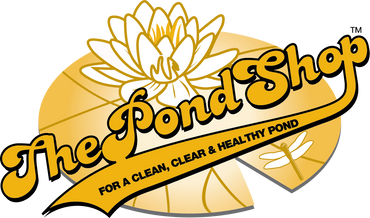Spatterdock

Spatterdock is a native, perennial, wildflower aquatic plant commonly found in shallow water pond and lakes, slow moving streams, and canals throughout the eastern United States. The leaf blades are 6 – 12 inches long and about two-thirds as much across; they are usually held several inches above the water, although sometimes they float on the water’s surface. The leaf blades are medium green and oval shape with smooth blunt tips. Individual yellow flowers 1 – 3 inches across are produced from stout pedicels that emerge a few inches from the water. Spatterdock flowers often bloom all summer long and emit a strong fragrant odor. Once the flowers die they are replaced by small fruits, that contain large seeds. Plants also grow from fragments of the rhizome if broken up. Although spatterdock is not considered invasive, its extensive rhizome system allows it to grow and reproduce rapidly if not managed. Rapid growth occurs in shallow water bodies with excess nutrients. Dense growth interferes with recreational activities and cause light reduction of oxygen levels that can cause fish kills.
Prevention
Protecting water quality can help control overabundant aquatic plants and is best accomplished by limiting and reducing the amount of nutrients that enter a pond or water body. Not addressing the nutrient issues will lead to perpetual need to control over-growth. Containing infestations as soon as they appear will help avoid costly treatments later in the season.
Biological Control
Beneficial bacterial products and enzymes such as PZ900 feed on nutrients in the water making them unavailable for plant growth. Reducing nutrients can help prevent invasion.
Physical/Mechanical Control
Short-term control can be achieved by cutting surface leaves. Although the leaves will initially be smaller, the same number of spatterdock plants will generally regrow from rhizomes. Plants can be removed by digging rhizomes from the sediment. This is very labor intensive but provides longer control. All plant remnants must be removed from the area and properly discarded to prevent re-growth.
Dyes and colorants reduce aquatic plant growth by limiting sunlight penetration and reducing photosynthesis.
Aeration has also been used as a mechanical approach to hinder spatterdock proliferation. Spatterdock prefers to grow in slow moving water. Aerators will create current patterns in the water body disrupting their growth. Furthermore, the added oxygen will accelerate the decomposition process of nutrients that feed pondweeds and algae during the summer months.
Chemical Control
When used carefully according to the label instruction, aquatic herbicides can be safe and effective management tools.
Sonar A.S is long acting systemic herbicide ideal for water bodies with minimal flow. Simply mix Sonar A.S. with water and spray throughout the surface of the water or pour in different spots around the pond. Sonar A.S. does not have water use restrictions.
Sonar RTU is a long acting, systemic, easy to use herbicide. Sonar RTU does not require mixing, simply open the bottle and treat from the shoreline.
Clear Cast Herbicide and MSO Adjuvant are specifically designed for use in and around water. These products are the ultimate solution in eliminating most emergent vegetation for long-lasting results with minimal retreatment.
